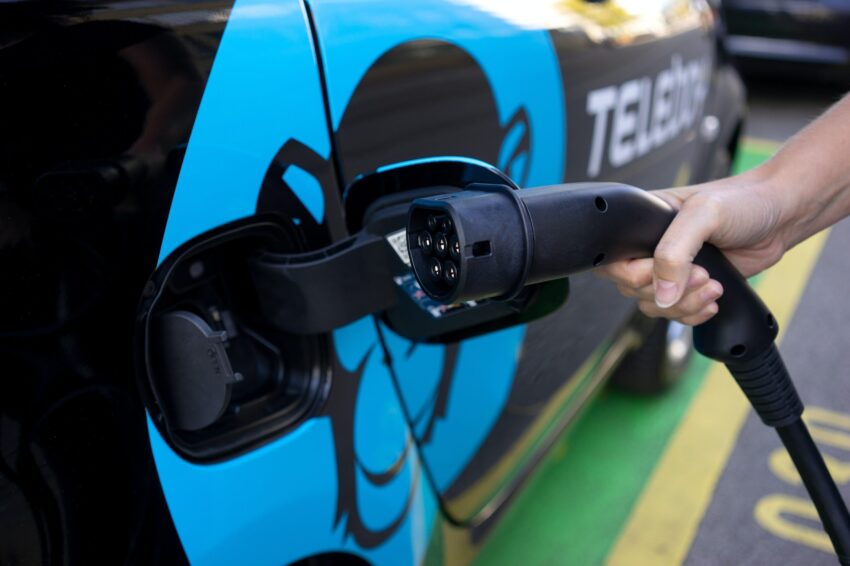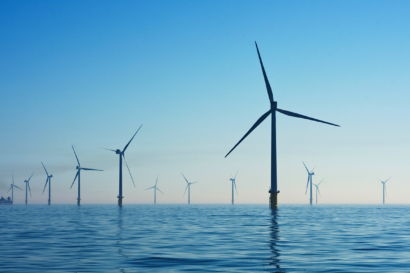AG INSIGHT | 27/09/2017
The yin and yang of electrification

Ian Ellison, Sustainability Manager at Jaguar Land Rover, reviews JLR’s electrification strategy and the challenges and opportunities of the transition to electric vehicles.
One of the pleasures of working in new product development is that you see future products before everyone else. The yin to this yang is the pain of not being able to talk about it. Rarely have I felt this pain more sharply than in knowing what’s coming in our electrification strategy, being asked about it often and having to say, ‘er, I can’t tell you, yet’. Finally, we are able to talk about a 2020 strategy of electrification of all new products. With this comes not just the satisfaction of completing those conversations but a clear sign that, as our CEO Dr Ralf Speth said in his own announcement this month: ‘the future is electric’.
The next concern, then, is whether these electrified cars will be any good. Well I’m pleased to say they will be – not just from my own (potentially partisan) position as a sustainability professional, but, much more importantly from the perspective of ‘traditional’ car lovers. As we develop the Jaguar I-Pace, our first fully electric car, I hear the traditionalists (I won’t call them ‘petrol-heads’), whispering to each other, almost guiltily, ‘I have to admit, I really like it’. Why wouldn’t they? The battery provides a low centre of gravity for great handling, the motor provides instant torque for great acceleration with great grip from the electric 4 wheel drive – these are drivers’ cars.
Designing for electrification
As an engineer I like to see how new constraints can drive innovation that may otherwise have been dismissed. For example, a true-to-brand Jaguar has a long nose – for the powerful engine. No need for this with an electric motor, so the I-Pace has a short nose, yet the front grill is retained and the shorter bonnet is creatively deployed to steer air over the car, improving aerodynamic performance. The result: more yin-yang – something both traditional and modern, enabling both more space inside, whilst being smaller outside, TARDIS-like.
On the subject of long bonnets, what is to become of the world’s most beautiful car, the much loved Jaguar E-Type? Such long-lived, timeless classics can be sustainable, as the environmental cost (as measured over the whole product life) of construction is spread over many more years. However, for this to work, there’s a time when the engines (in this case a 5-litre V12) must be modernised. We can see this in action with the Jaguar E-Type Zero – an E-Type restored with electric propulsion.
Electrified vehicles still only account for a small percentage of sales. To mainstream them we have to demonstrate no loss of ‘sexiness’ versus the best performing conventional cars. I get grief from dyed-in-the-wool sustainability colleagues for retaining a little of my life-long interest in Formula 1, but with Formula E, I now have a sustainable autosport outlet and even more so in 2018, as the first production series races join Formula E with the I-PACE eTROPHY – performance aplenty.
How we get there
So can we leap directly to this all-electric future now? In my view we should go as fast as possible, but no faster. There are lots of constraints that don’t permit an immediate leap to electrification. We have to design the cars, the charging infrastructure, the green-grid, plus build the factories and supply chains, not to mention moving ‘hearts and minds’. A rigorous look at the science says there is still a role for conventional engines as these changes happen. Given the twin challenges of air quality and climate change, modern hybrids and Euro 6 diesels, deployed thoughtfully, present valid transitional technologies as we move toward full electrification, powered from a green grid. We should let rigorous engineering and science define the optimum pace and direction of change, rather than leave it to personal opinions or press headlines.
This latter point can be contentious. The press, politicians and often the public at large can sometimes struggle with both the nuance and the detail that comes with science and engineering. But we must continue to talk and learn from each other. If publicly funded scientists, engineers and politicians can collaborate internationally over decades for detailed exploration of a planet and its moons a billion kilometres away, surely we can work together to ensure clean air and a stable climate here at home.
Finally, the technological march towards sustainable mobility doesn’t stop with electrification. We are entering a world with cars as connected as our smart phones, cars that can potentially drive themselves and a generation that sees mobility better represented as a shared service than a capital asset. All of these bring business, social and commercial challenges, but with these come opportunities to solve the problems that have accumulated with the established technology. What does this mean? Er, I can’t tell you, yet.
Ian Ellison is Sustainability Manager at Jaguar Land Rover.



